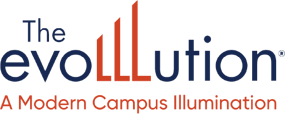Published on
Rethinking Digital Engagement in Higher Education

Editor’s note: This article is adapted from a conversation with Catherine Coe on the Illumination Podcast in which she discusses the evolving landscape of student engagement in higher education. To hear the full discussion, listen to the episode here.
The role of an institution’s website has never been more critical. In an era where digital-first experiences shape student expectations, a college or university’s website is no longer just an informational hub but a dynamic, interactive platform that influences recruitment, engagement and retention. Institutions that treat their websites as static repositories are missing an opportunity to create a seamless, personalized and accessible experience for all learners.
With increasing demand for real-time updates, personalized content and digital accessibility, higher education leaders must rethink their approach to web content management. It’s not just about technology; it’s about meeting students where they are, providing the right information at the right time and fostering meaningful connections.
Websites as the First and Last Touchpoint for Students
A prospective student’s first encounter with an institution is often through its website. It’s the digital front door—an introduction to the culture, offerings and opportunities available. But the experience doesn’t end there. Throughout a student’s academic journey, the website serves as a go-to resource for course offerings, campus events, career services and administrative updates.
The challenge is that many institutions build websites for initial engagement but fail to optimize them for ongoing student needs. A truly effective higher ed website should do the following:
- Provide clear, accessible and up-to-date information for every type of learner
- Adapt to different student personas, whether first-time freshmen, transfer students, adult learners or international students
- Enable real-time updates and communications—from emergency alerts to policy changes
- Support personalized digital pathways, guiding students from inquiry to enrollment to graduation
Balancing Personalization with Accessibility
As institutions explore personalized digital experiences, a key challenge emerges: How do you tailor content to individual needs while maintaining accessibility and inclusivity?
A student-centric website should simplify navigation and present information in an intuitive way, which means focusing on these points:
- Prioritizing accessibility by ensuring content meets ADA and WCAG standards
- Avoiding overly complex personalization that might unintentionally exclude students who are still exploring their options
- Organizing content by learner journey rather than overwhelming students with choices before they’re ready
Instead of hyper-personalized portals that assume students already know exactly what they need, many institutions are finding success with structured, guided pathways. A well-designed website should allow students to identify their own journey—whether they are exploring options, preparing to apply or enrolling in courses—without locking them into rigid categories too soon.
The Power of Data-Driven Web Content
Institutional priorities have long served as the driving force for content strategy in higher ed. But the most successful institutions are shifting toward data-driven content strategies that prioritize student behavior and engagement trends.
Here are some examples:
- Optimizing academic program pages can significantly increase engagement. Institutions that integrate real-time career outlook data, clear course pathways and success stories see higher page retention and lower bounce rates.
- Landing pages designed for specific student personas such as adult learners or transfer students help direct visitors to the information most relevant to them.
- Reducing website complexity and streamlining navigation leads to more engaged users who spend more time exploring program offerings and student resources.
An example from recent institutional data found that, after refining program pages, one college saw a 78% increase in visitors, a 93% reduction in bounce rates and an 183% increase in on-page engagement. These aren’t just web traffic improvements; they translate directly into more informed applicants, higher event participation and stronger enrollment outcomes.
The Role of AI and Automation in Higher Ed Web Management
AI-driven content personalization and automation are reshaping digital experiences across industries, and higher education is no exception. But where and how should it apply AI in a web content strategy?
Some key areas where AI and automation are proving effective:
- Chatbots and conversational interfaces to help answer frequently asked questions
- Automated alerts and notifications for real-time updates on campus closures, application deadlines or policy changes
- Content recommendations based on browsing behavior, helping students discover relevant programs and resources
However, institutions must tread carefully. AI should enhance student interactions, not replace human engagement. While automation can provide efficiency, higher ed websites should still retain a human-centered approach, particularly in areas where students need personalized guidance, such as admissions, financial aid and academic advising.
Looking Ahead: The Future of Higher Ed Digital Engagement
As digital expectations continue to evolve, institutions must achieve these goals:
- Treat their website as a dynamic engagement tool rather than just an informational hub
- Prioritize accessibility and inclusivity in content design and structure
- Use data to drive content decisions, ensuring information is relevant, engaging and easy to find
- Leverage AI thoughtfully, balancing efficiency with the need for human interaction
Higher education’s digital presence is no longer a secondary consideration but a primary driver of student engagement and institutional success. Those who embrace strategic, student-first web content management will not only attract more students but support them throughout their academic journey and beyond.



